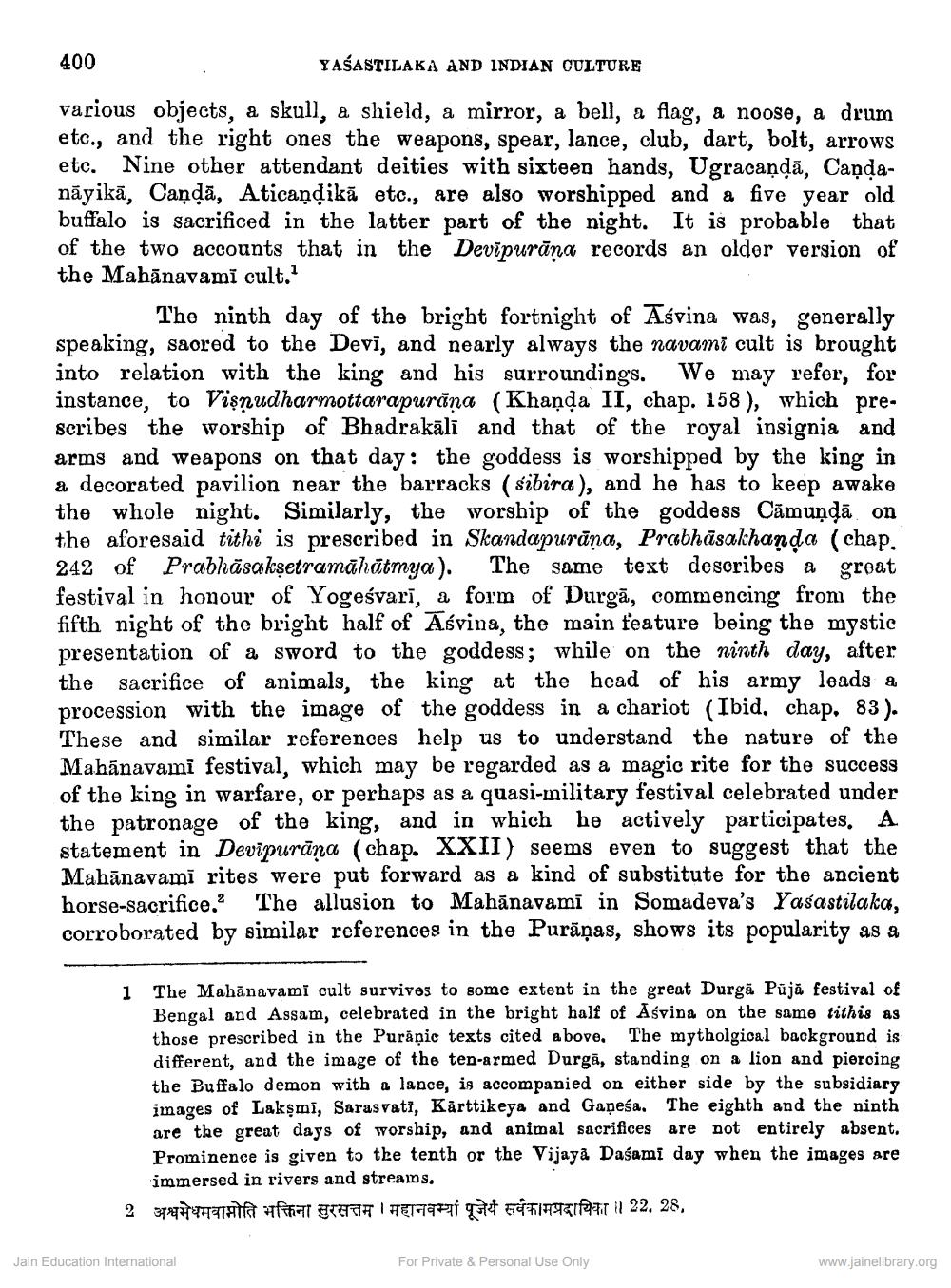________________
400
YAŠASTILAKA AND INDIAN CULTURE
various objects, a skull, a shield, a mirror, a bell, a flag, a noose, a drum etc., and the right ones the weapons, spear, lance, club, dart, bolt, arrows etc. Nine other attendant deities with sixteen hands, Ugracaņdā, Caņdanāyikā, Caņdā, Aticaņņikā etc., are also worshipped and a five year old buffalo is sacrificed in the latter part of the night. It is probable that of the two accounts that in the Devipurāna records an older version of the Mahānavami cult.
The ninth day of the bright fortnight of Aśvina was, generally speaking, saored to the Devī, and nearly always the navami cult is brought
lation with the king and his surroundings. We may refer, for instance, to Vişnudharmottarapurāņa (Khaņda II, chap. 158), which prescribes the worship of Bhadrakāli and that of the royal insignia and arms and weapons on that day: the goddess is worshipped by the king in a decorated pavilion near the barracks (sibira), and he has to keep awake the whole night. Similarly, the worship of the goddess Cāmundā on the aforesaid tithi is prescribed in Skandapurāna, Prabhāsakhanda (chap. 242 of Prabhāsaksetramāhātmya). The same text describes a great festival in honour of Yogeśvari, a form of Durgā, commencing from the fifth night of the bright half of Āśvina, the main feature being the mystic presentation of a sword to the goddess; while on the ninth day, after the sacrifice of animals, the king at the head of his army leads a procession with the image of the goddess in a chariot (Ibid. chap. 83). These and similar references help us to understand the nature of the Mahānavami festival, which may be regarded as a magic rite for the success of the king in warfare, or perhaps as a quasi-military festival celebrated under the patronage of the king, and in which he actively participates. A statement in Devipurāna (chap. XXII) seems even to suggest that the Mahānavami rites were put forward as a kind of substitute for the ancient horse-sacrifice. The allusion to Mahānavami in Somadeva's Yasastilaka. corroborated by similar references in the Purāņas, shows its popularity as a
i The Mahānavami cult survives to some extent in the great Durgā Pūjā festival of
Bengal and Assam, celebrated in the bright half of Asvina on the same tithis as those prescribed in the Purăộic texts cited above. The mytholgical background is different, and the image of the ten-armed Durgā, standing on a lion and piercing the Buffalo demon with a lance, is accompanied on either side by the subsidiary images of Lakşmi, Sarasvati, Kārttikeya and Gaņeśa. The eighth and the ninth are the great days of worship, and animal sacrifices are not entirely absent. Prominence is given to the tenth or the Vijaya Daśami day when the images are
immersed in rivers and streams. 2 374721haft TUTI 77 4 Erg 1991 i 22, 28,
Jain Education International
For Private & Personal Use Only
www.jainelibrary.org




